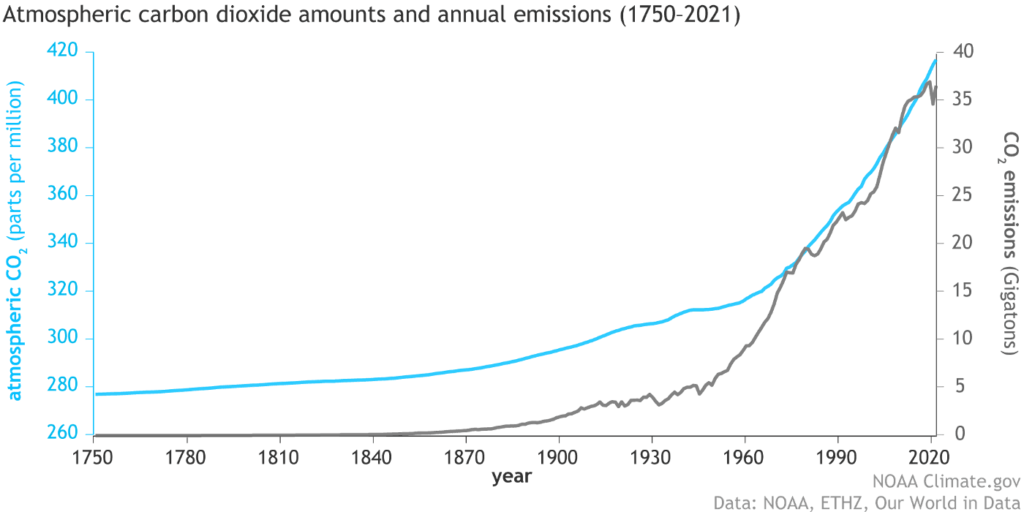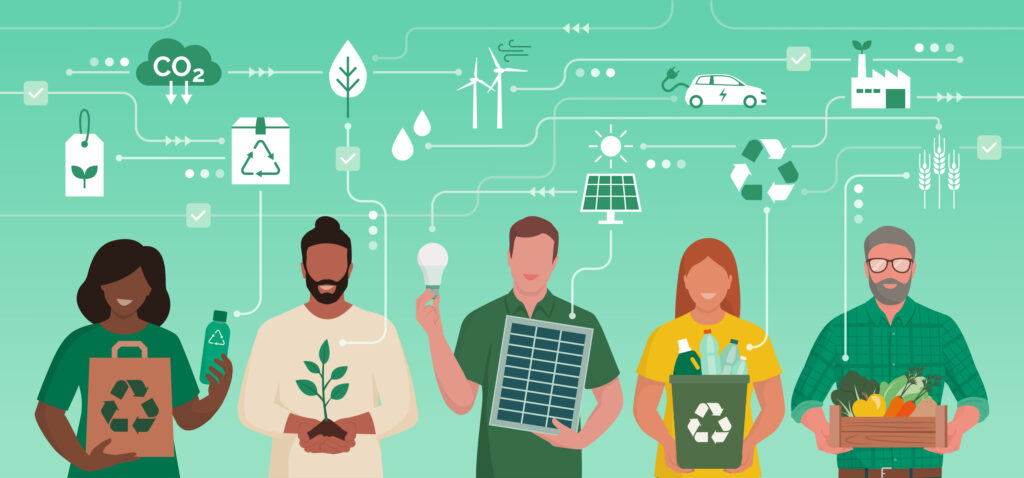The Future of the Planet is a Big Wager
Argue and Do Nothing, or Take Action?
The topics of climate change and anthropogenic (human-caused) global warming (AGW) are complex, with plenty of people in disagreement. Are the physical effects we observe, such as disappearing glaciers and rising sea levels, caused by climate processes we don’t fully understand, or have they been caused by emissions of greenhouse gasses (GHGs), including CO₂, generated by human activity?
Deciding what to do is like any other wager: you weigh the risks and options, then place your bet. This bet is for very high stakes: the future of our world.
As we weigh our options, I think this quote from from Dr. Kerry Emanuel, an MIT climate scientist, provides important guidance: “You’ve got to come up with some kind of middle ground where you do reasonable things to mitigate the risk and try at the same time to lift people out of poverty and make them more resilient. We shouldn’t be forced to choose between lifting people out of poverty and doing something for the climate.”
Let’s consider a few options for placing this bet:
- Continue burning fossil fuels without worrying about climate change or AGW. This is the path promoted by most climate change skeptics.
- Continue to debate (or deny) whether climate change is real, while being unable to reach a consensus on positive actions to lower or eliminate GHG emissions. This is pretty much what we’ve been doing and are doing now, and it has led to a patchwork approach.
- Do as much as we can, as soon as we can, to lower or eliminate GHG emissions within socioeconomic constraints, and keep getting better at measuring and understanding the dynamics of Earth’s climate.
I’m a proponent of pursuing option 3 over the next 10 years or so. We need to be aggressive now, while we continue to learn more about this complex issue. Pursuing option 1 is too risky, with a significant downside potential. Pursuing option 2 has given us only mixed results, so far.
Let’s look at some of the evidence and science that makes this wager tricky.
Atmospheric CO2 Levels Have Increased Sharply
Consider this data:

Ice samples taken from glaciers (in this case from Vostok, in eastern Antarctica) include bubbles of air from the time when glacial layers were formed. Laboratory analysis of those bubbles provides information of the makeup of the atmosphere at that point in time.
The graph shows the history of Earth’s atmosphere going back about 800,000 years. Over hundreds of thousands of years, the Earth went through many ice ages and glacial cycles. The sun experienced tens of thousands of solar cycles. Yet, the atmospheric CO₂ levels stayed in a range between 180 and 300 parts per million (ppm).
Starting around 1950, something unique changed and CO₂ levels began increasing sharply. Thousands of climate scientists believe this 35% increase in CO₂ levels is caused by burning of fossil fuels. Climate change skeptics argue that the increase is caused by other environmental forces or that the measurements are incorrect.
The Greenhouse Effect
A quick search on the internet will yield hundreds of illustrations of the greenhouse effect. Here’s one example:

The concept and science of certain gasses and water vapor reflecting infrared energy back to the Earth, and warming it, has been understood for decades.
At the current CO₂ atmospheric concentration of about 420 ppm (0.042%), some skeptics argue that this “trace” amount is negligible and that water vapor is the main factor in the increase in global temperatures. But, the Earth’s climate is extremely complex, and there’s uncertainty involved in explanations of temperature changes due to water vapor. The current consensus of the vast majority of international climate experts is that the greenhouse effect, fueled by CO₂ and other GHGs, is the cause of increasing temperatures around the world.
Global Temperature Measurement
This is a target of some climate change skeptics, as there are numerous ways to measure temperature (thermometers, weather balloons and satellite-based systems, for example) and there are different environmental, educational and governmental agencies compiling the data.
I reviewed numerous temperature data sources and concluded that Berkeley Earth, an independent U.S. non-profit organization focused on environmental data science, provides credible information. Each year they review their data against that from other sources to look for discrepancies. Those sources include NASA’s GISS Surface Temperature Analysis, NOAA’s GlobalTemp, the UK’s HadCRUT (Hadley Centre of the UK Met Office), Kevin Cowtan and Robert Way (University of York, Dept. of Chemistry), and the European Centre for Medium-Range Weather Forecasts reanalysis.
Here’s their graph of the change in global mean temperature of the Earth since 1860, updated in October, 2022:

From their website, “the global mean temperature in October 2022 was 1.05 ± 0.08 °C (1.89 ± 0.14 °F) above the 1951 to 1980 average.”
There’s much more detail on their website, but clearly the data indicates temperature is trending upwards. The global mean temperature is up about 1°C since the global emissions of CO₂ really started to accelerate at levels above 15 Gigatons annually, beginning around 1970.
Correlation or Causation?
In science, medicine and many other areas of everyday life, when a correlation is found it is necessary to determine if one thing is causing the other. There’s definitely a correlation between CO₂ emissions and atmospheric levels, as shown in this graph:

But, do we know with 100% certainty that anthropogenic CO₂ emissions are causing the increase in CO₂ concentration in the atmosphere? Thousands of climate experts say “yes” (or at least say there is a very high probability of this causation), but there are many skeptics that say “no”, citing a variety of other reasons for the trends in the graph.
Place Your Bet
This article has provided some of the key evidence about AGW and has identified some of the arguments of climate change skeptics. Every individual can make their own decision about how we should place our bet.
Ten years from now we’ll have more information and improved understanding about the changes in the Earth’s climate and we might need to take a different direction. But, if AGW is real, doing nothing during the next ten years could result in significantly more harm to the environment. If we pursue option 3 and the world spends a trillion $US or so on clean energy projects and CO₂ removal over the next 10 years, what’s the harm? We’ll have better energy diversity, more resilient energy grids, cleaner air, new industries (and the associated jobs) and will discover and improve some new technologies along the way.
We still need fossil fuels as we transition to clean energy sources and adapt to climate change, but the transition needs to be managed in a thoughtful manner, considering social, technical, geopolitical and economic aspects of the process as Dr. Emanuel suggests.
If you’re in the option 3 camp, place your bet by doing whatever you can to influence climate and energy policymakers to promote the transition to renewable energy and decarbonization of as many commercial and industrial activities as possible, as quickly as possible. Live your life in an environmentally sustainable manner to an extent that works for you.

Finally, don’t fall into a mindset of doom. The world isn’t ending in the next 10 years and the inertia of clean energy initiatives already in place will have, I believe, a positive effect.
